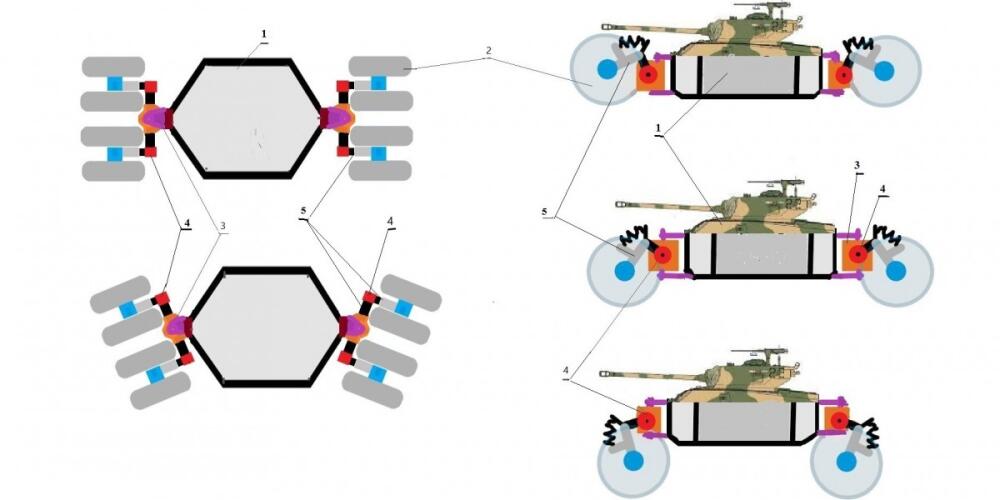
Tanks are weapons of war that are used for defense and attack. These are heavily armored vehicles that carry cannons, machine guns and other weapons with which they can open fire on enemy tanks, bunkers, infantry and aircraft. They can move over flat and uneven terrain, over mud, cross ditches, and knock down tall plants and trees in front of them.
The problems with tanks in modern warfare is that they become a very easy target for enemy aircraft and drones, which is best seen in the Ukrainian war. When the attacker does not have superiority in the air, his tanks very quickly become coffins for their own crews. Thousands of Russian tanks have been destroyed by light Ukrainian anti-tank missile systems and cheap small drones. Offensive tanks are in much greater danger of being destroyed than defensive tanks.
Tanks in defense are much better hidden in shelters, and are more difficult to detect and destroy. However, with the advent of small, cheap drones, they are also much more difficult to hide.
Attacking tanks are completely exposed to enemy fire, and in rainy weather they become almost completely incapable of attacking. During rain and snow, the ground turns into mud, and from then on they can only move on hard roads, which are usually covered by strong enemy defensive weapons.
In order to reduce the losses of tanks, it is necessary to turn them into vehicles with much greater mobility in all weather conditions, and to enable them to change their height.
Wheeled vehicles are much more mobile than tracked vehicles. Tracked vehicles move more easily in mud and rough terrain, but so can tractors with large, wide wheels.
In order for the vehicle to be raised and lowered in relation to the ground, it is necessary to make the wheels so that they can be raised and lowered. Lowering the wheel raises the vehicle, and raising the wheel lowers the vehicle.
This type of tank with large wheels and a mechanism for lifting and lowering is shown in the picture.
The body of the tank (1) has the shape of a hexagon, viewed from above. On the front and back of the tank body (1) there are main joints (3), one at the front and one at the back of the tank body (1), which turns the wheel arms (5) left and right. The arms of the wheels (5) have lifting joints (4) on them, which raise the wheels (2) up or down. When the wheels(2) go down then the tank body(1) goes up, and when the wheels(2) go up then the tank body(1) goes down towards the ground.
Inside the tank(1) is an engine that drives an electric generator that produces electricity. Electricity powers multiple electric motors that drive all systems. In each wheel (2) there is one electric motor that drives that wheel. In the main joints (3) there is one electric motor each, which turns the arms of the wheel (5) left and right when the tank moves, which measures the direction of its movement. Inside the lifting joints (4) there is one electric motor that turns the arm of the wheel (5) up or down, which also moves that wheel (2) up or down. When the wheel arms (5) are rotated downwards, the tank body (1) rises, and when the wheel arms (5) are rotated upward, the tank body (1) is lowered towards the ground. All four wheels (2) can be raised and lowered simultaneously, and they can also be raised and lowered individually. When the tank encounters a large obstacle while moving, then one wheel (2) can be raised high over the obstacle, and the tank moves forward a little in order to transfer that wheel (2) over the obstacle. Then the same procedure is applied with each individual wheel (2). In this way, the tank can be moved over high obstacles. Thanks to this, the tank can move through a dense forest without the risk of the tracks getting stuck on a stump and falling, as with existing tanks.
This type of tank can hide in a trench in battle, and when it detects an opponent, the tank rises to the highest position and opens fire. After that, it quickly descends downwards, thus becoming invisible to opponents on the ground. In order to hide from drones, such a tank can have a canopy mounted on it that moves together with the tank's body, thus masking the tank. In the lowered position, such a tank can be hidden under low overhangs, in car garages, or under low trees and bushes that are more than 3-4 meters high.
When moving over muddy terrain, this type of tank has the same ability to move as agricultural tractors, thanks to the large wheel profile and wide wheel width. Such wheels have a large contact surface with the ground, which reduces the pressure on the ground and the depth of sinking into the muddy ground. If the wheels sink deep into the ground, then the body of the tank can be raised above the ground and continue to move. In the raised position, the tank can cross shallow river courses as well as swamps.
Tags
Featured articles